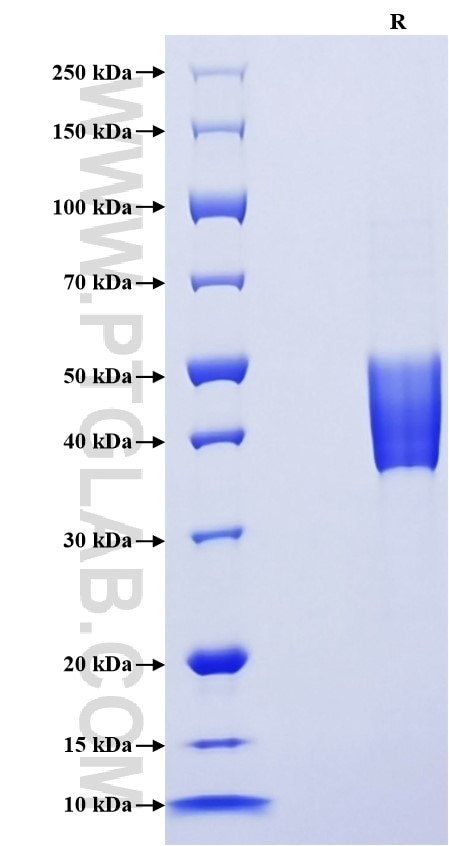Recombinant Human CD268/BAFFR protein (rFc Tag)
Species
Human
Purity
>90 %, SDS-PAGE
Tag
rFc Tag
Activity
not tested
Cat no : Eg1922
Validation Data Gallery
Product Information
| Purity | >90 %, SDS-PAGE |
| Endotoxin | <0.1 EU/μg protein, LAL method |
| Activity |
Not tested |
| Expression | HEK293-derived Human CD268 protein Ser7-Ala71 (Accession# Q96RJ3-1) with a rabbit IgG Fc tag at the C-terminus. |
| GeneID | 115650 |
| Accession | Q96RJ3-1 |
| PredictedSize | 32.8 kDa |
| SDS-PAGE | 37-52 kDa, reducing (R) conditions |
| Formulation | Lyophilized from 0.22 μm filtered solution in PBS, pH 7.4. Normally 5% trehalose and 5% mannitol are added as protectants before lyophilization. |
| Reconstitution | Briefly centrifuge the tube before opening. Reconstitute at 0.1-0.5 mg/mL in sterile water. |
| Storage Conditions |
It is recommended that the protein be aliquoted for optimal storage. Avoid repeated freeze-thaw cycles.
|
| Shipping | The product is shipped at ambient temperature. Upon receipt, store it immediately at the recommended temperature. |
Background
TNFRSF13C (Tumor necrosis factor receptor superfamily member 13C), also known as BAFF-R, BR3, is a widely expressed receptor of important functional relevance for T and B cell responses, represents an attractive target for intervention in autoimmune diseases. The absolute absence of BAFF-R on earlier precursors suggests that a complete BCR positively regulates BAFF-R expression. BAFF/BAFF-R signaling axis in the pathogenesis of autoimmune human diseases and B lineage malignancies have largely prompted studies focusing on BAFF expression.
References:
1. Ye Q, et al. (2004). Eur J Immunol. Oct;34(10):2750-2759. 2. Ng LG, et al. (2004). J Immunol. Jul 15;173(2):807-817. 3. Mihalcik S.A., et al. (2010). J Immunol. Jul 15;185(2):1045-54.

